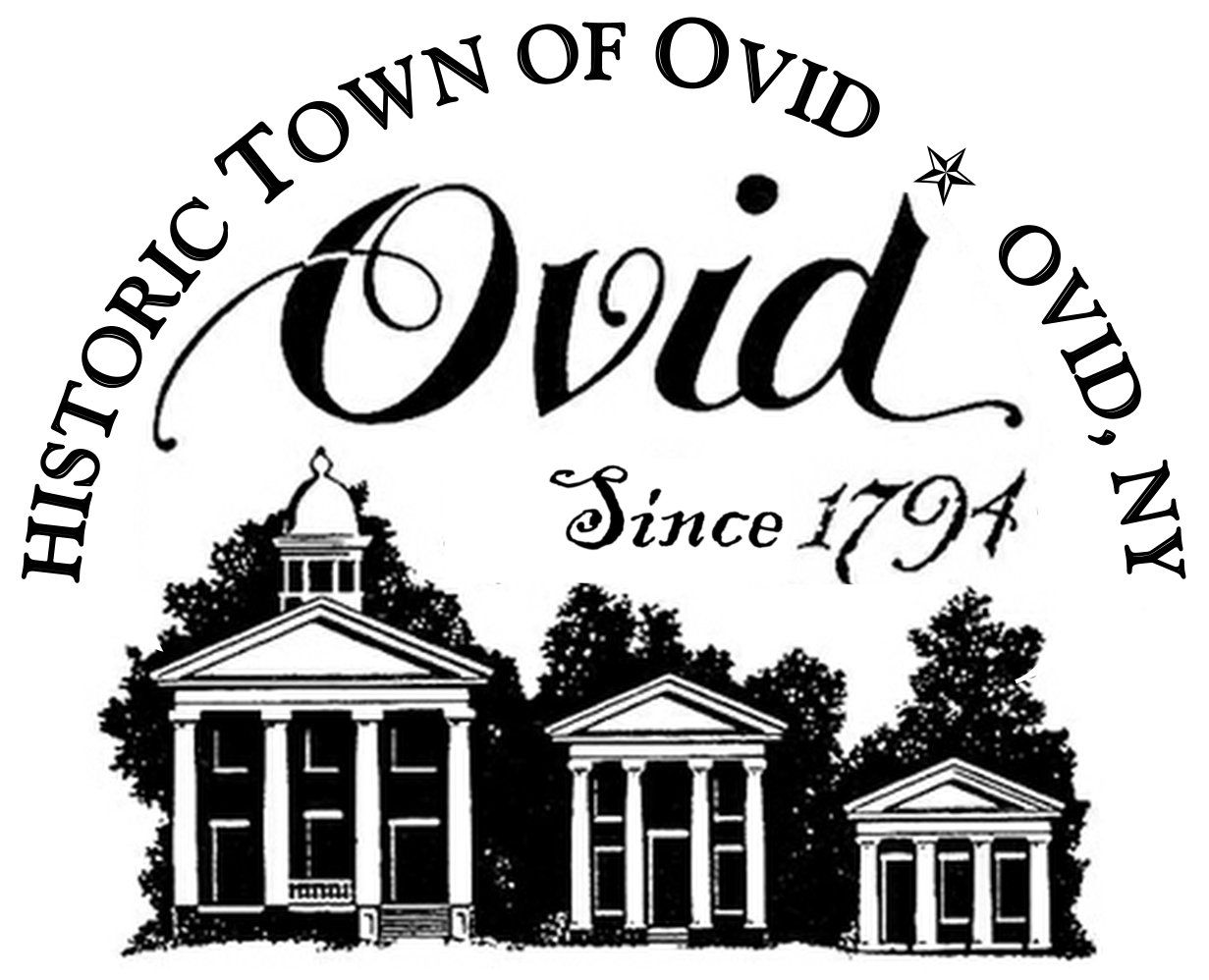

The Town of Ovid is in Seneca County, New York, United States. The population was 2,757 at the 2000 census. The town is named after the Roman poet Ovid, a name assigned by a clerk interested in the classics.
The Town of Ovid also contains the Village of Ovid, once the county seat of Seneca County. The town is in the south part of the county, extending between Seneca Lake and Cayuga Lake, the two largest of the Finger Lakes.
HISTORY
The town was the native land of the Iroquois. The Sullivan Expedition passed through this area in 1779.
The region was part of the Central New York Military Tract used to pay soldiers of the American Revolution.
Andrew Dunlap, the first settler in the town, is believed to be also the first settler in the county.
The town was formed in 1794, while still part of Onondaga County. Part of Ovid was taken in 1802 to form the Town of Hector (now in Schuyler County). Seneca County’s and the Town of Ovid’s boundaries were officially formed out of Onondaga and Cayuga counties in 1804.
The first meeting of the Seneca County Board of Supervisors in Annual Session was held in the Town of Ovid, on October 2, 1804. The Supervisors were Lewis Birdsall (Junius), Israel Catlin (Fayette), John Sayre (Romulus), Silas Halsey (Ovid), John Livingston (Hector, now part of Schuyler County), and Archer Green (Ulysses, now part of Tompkins County). The towns of Covert, Lodi, Seneca Falls, Tyre, Waterloo, and Varick were added to the county at later dates.
Although the County Seat is now located in Waterloo, the Board of Supervisors meets in session once a year in the old Court House (Papa Bear) in the Village of Ovid to recognize the County Seat’s beginning in Ovid. In 1817, part of the Town of Ovid was used to form the Town of Covert.
GEOGRAPHY
According to the United States Census Bureau, the town has a total area of 38.8 square miles.
31.0 square miles of it is land and 7.8 square miles of it is water.
The west town line, delineated by Seneca Lake is the border of Yates County, and the east town line, delineated by Cayuga Lake is the border of Cayuga County.
New York State Route 96, New York State Route 96A, New York State Route 414 converge at Ovid village.
DEMOGRAPHICS
As of the census of 2000, there were 2,757 people, 918 households, and 585 families residing in the town.
There were 1,118 housing units. The racial makeup of the town was 85.42% White, 9.50% Black or African American, 0.47% Native American, 0.11% Asian, 0.07% Pacific Islander, 2.97% from other races, and 1.45% from two or more races. Hispanic or Latino of any race were 5.80% of the population.
There were 918 households out of which 30.1% had children under the age of 18 living with them, 49.8% were married couples living together, 9.4% had a female householder with no husband present, and 36.2% were non-families. 29.7% of all households were made up of individuals and 16.0% had someone living alone who was 65 years of age or older. The average household size was 2.51 and the average family size was 3.11.
In the town the population was spread out with 23.5% under the age of 18, 9.8% from 18 to 24, 30.4% from 25 to 44, 22.7% from 45 to 64, and 13.6% who were 65 years of age or older. The median age was 37 years. For every 100 females there were 127.9 males. For every 100 females age 18 and over, there were 136.6 males.
The median income for a household in the town was $32,833, and the median income for a family was $42,344. Males had a median income of $31,250 versus $25,125 for females. The per capita income for the town was $18,329. About 4.4% of families and 9.9% of the population were below the poverty line, including 10.5% of those under age 18 and 5.4% of those age 65 or over.
